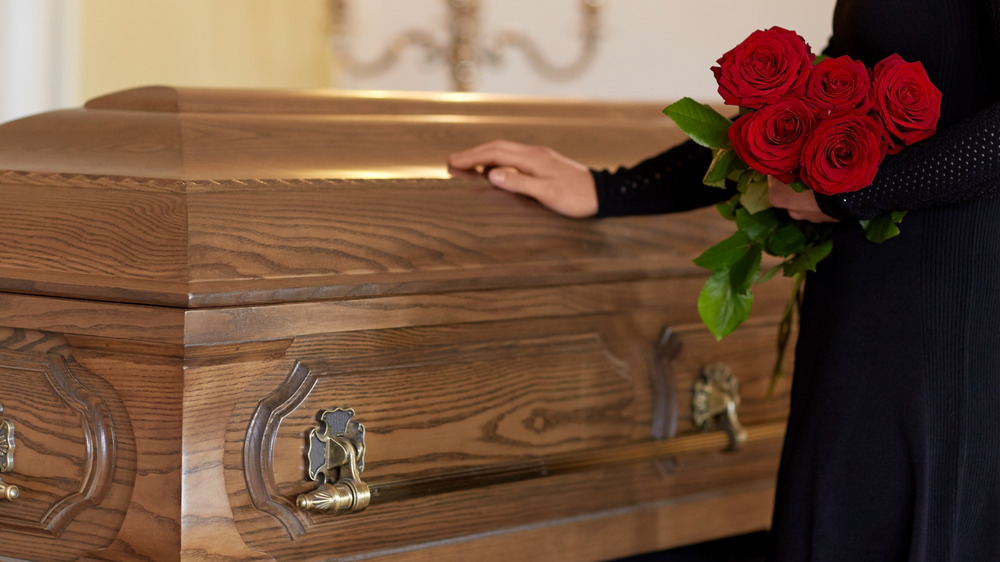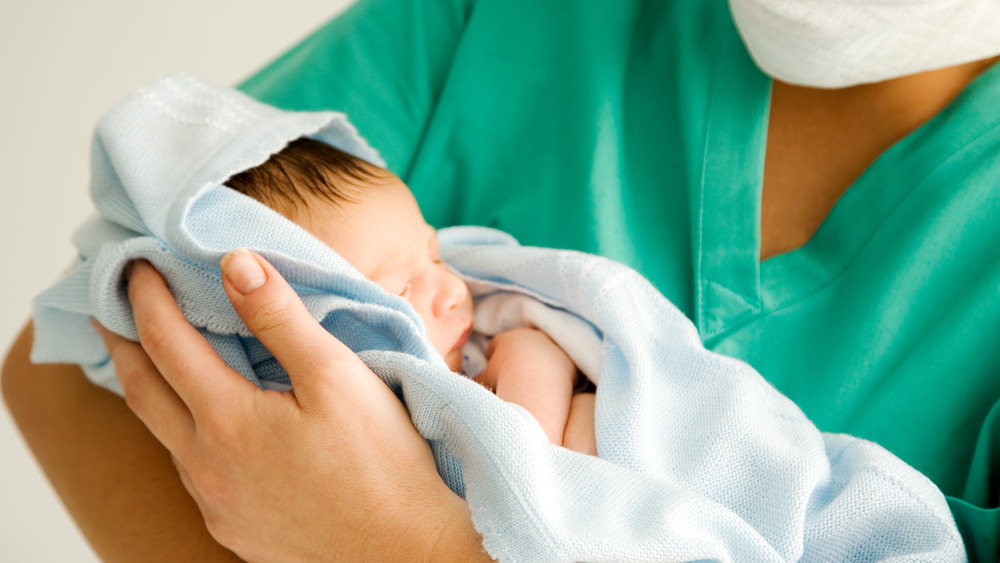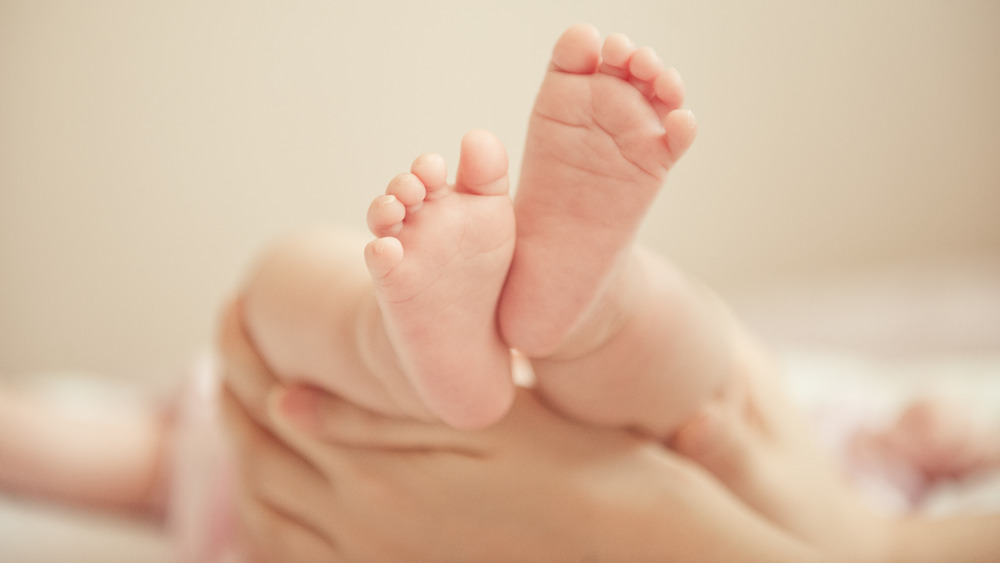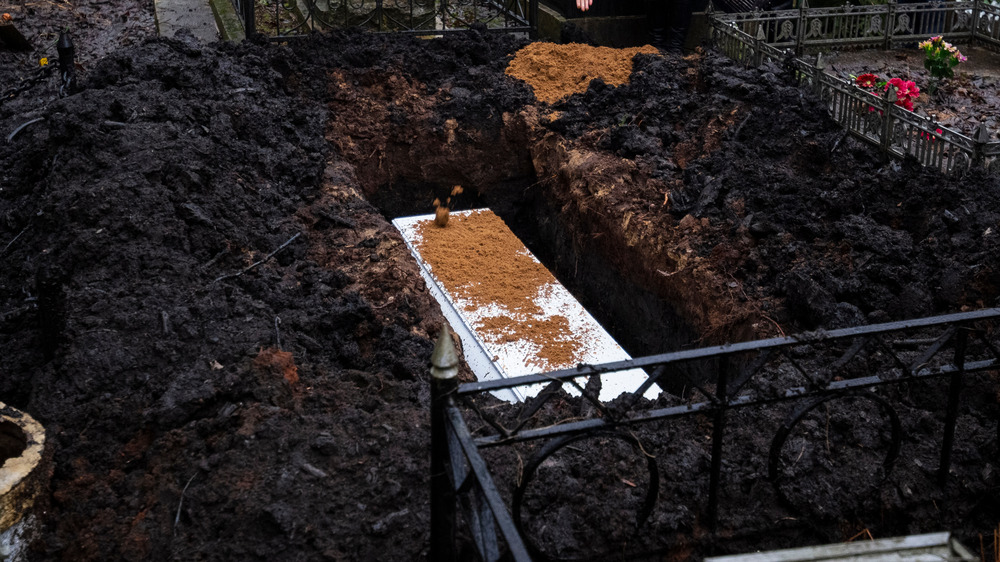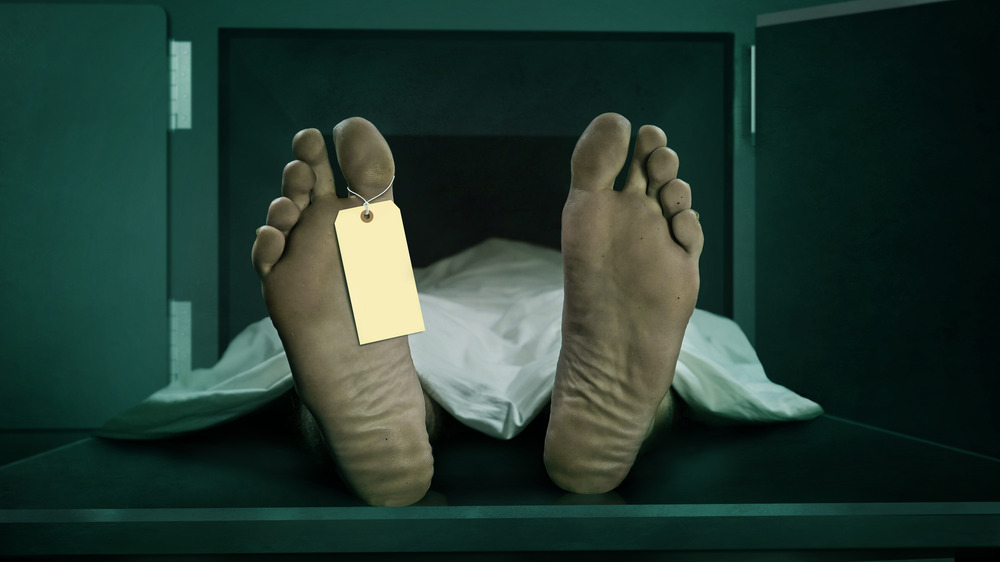Can Your Dead Body Actually Give Birth To A Baby?
Strange things happen to the human body after death. The skin recedes, giving the impression that nails and hair continue to grow. Chemicals stored in the body begin to leak out. In some cases, the body can decay into something not unlike soap.
Tragically, sometimes women die while in the advanced stages of pregnancy. Before modern medicine, this was almost certainly a death sentence for the unborn baby as well. Nowadays, however, there's a fair chance the baby, almost always delivered via C-section, will survive. In a far more gruesome and unpleasant scenario, sometimes the body of a dead woman will expel a fetus (almost always dead as well) through a biochemical process about which the less is said, the better.
But whether it's via the more modern C-section process that can sometimes save the life of the baby, or the more gruesome process that occurred before modern medicine, one thing is certainly clear: the body of a woman who was pregnant when she died can, and often does, deliver a baby.
Posthumous delivery of healthy babies via C-Section happened throughout history
The caesarean section, or C-section, has been around for millennia, although no one with the title of Caesar was born that way (that's an historical myth, according to Healthline). These days, it's such a common and routine procedure that an estimated one third of live births in the U.S. happen this way.
Before modern medicine, however, slicing open the abdomen of a mother was almost certainly a death sentence for her, and was only carried out as a last resort, or if the mother was dying or already dead.
The practice of delivering a healthy baby via C-section for a dead or dying mother goes back centuries. For example, according to the National Library of Medicine, ancient Mauryan Emperor Bindusara was born via C-section in 320 BCE, as his mother died of poisoning. Similarly, in 1204, according to book The Corpse: A History, Catalonian Saint Raymond Nonnatus was delivered, alive, via C-section as his mother died in childbirth.
Today doctors can often save the life of the baby after the mother dies
The practice of delivering healthy babies after their mothers have died has not been limited to history. In fact, it's a rather commonplace, though extraordinarily sad, aspect of modern medicine.
For example, in 2020, according to the South Florida Sun Sentinel, Catarina Reymundo Marcos, 34, was struck and killed by a hit-and-run driver. Though she died in the incident, doctors were able to deliver her baby, alive and well, via C-section. Similarly, according to WBRZ, in June of 2020 Allie Guidry died of COVID-19 while pregnant. Doctors were able to save the baby, who wasn't due until October.
None of this is to say that a baby born as its mother dies is fully out of the woods, even if born alive via C-section. According to the National Institutes of Health, though the process is considered "uncomplicated," not all babies born via C-section to deceased mothers survive infancy; some only live a few days after their birth.
Coffin birth is every bit as gruesome as it sounds
While medicine has, over the centuries, sometimes been able to save the life of a fetus after its mother has died (or while killing her in the process of trying to save the baby), not all fetuses whose mothers died managed to be born alive. Through a biochemical process known as "coffin birth," a pregnant mother, after death, will sometimes expel the (also dead) fetus.
As Smithsonian explains, the phenomenon occurs when the decaying process causes a buildup of gases in the mother's abdomen. Not unlike the way a bullet is fired out of a gun, the buildup of gases eventually causes too much pressure, and the fetus is expelled through the birth canal. In one illustrative incident out of Italy, archaeologists found the remains of a woman, believed to be 25-35 year old, who had possibly died of a plague-like illness. As Live Science reported, also in the grave were the tiny bones, sex undetermined, of a fetus lying between the mother's legs. Researchers later determined that mother and baby were buried when she was at 38 weeks gestation, and that her corpse later expelled the dead fetus through the buildup of gases.
Coffin births still happen, although rarely
Thanks to modern embalming methods, according to All That's Interesting, coffin births are almost unheard of here in the 21st century — that is, if the body of the mother is found soon after she dies. Otherwise, all bets are off.
For example, in 2005, as reported in the scientific article "Postmortem fetal extrusion in a case of maternal heroin intoxication," posted at Springer, the body of a heroin-addicted German woman was found in her Hamburg apartment. As she had been dead for several days before she was found, a buildup of gases in her abdomen had partially expelled her fetus through her vagina. Similarly, in 2008, the body of a 38-year-old murder victim was found in Panama, according to Today I Found Out. As in the German case, she had been dead for several days before she'd been found, and in this particular case, the sweltering heat contributed to the decay of the body. Her abdomen had swelled, and the remains of her fetus were found in her undergarments.
